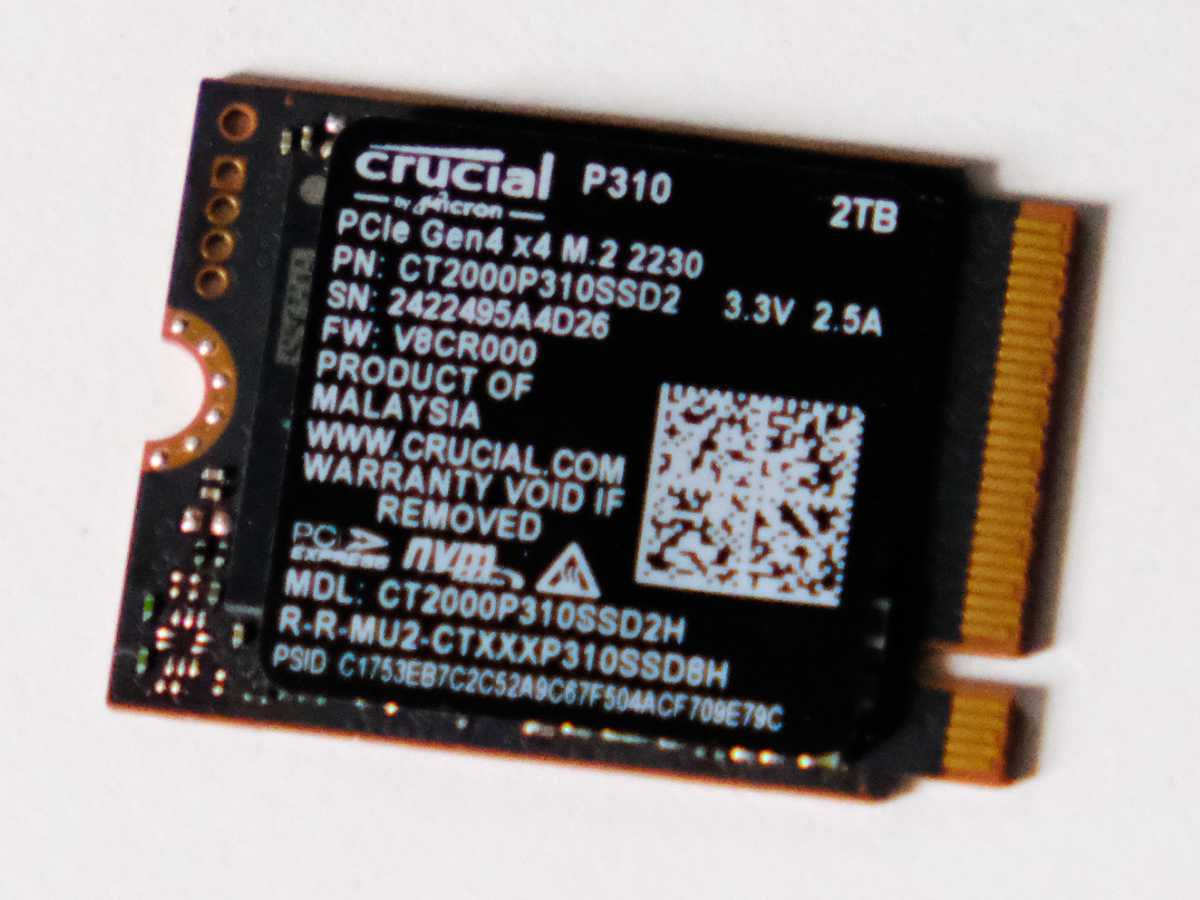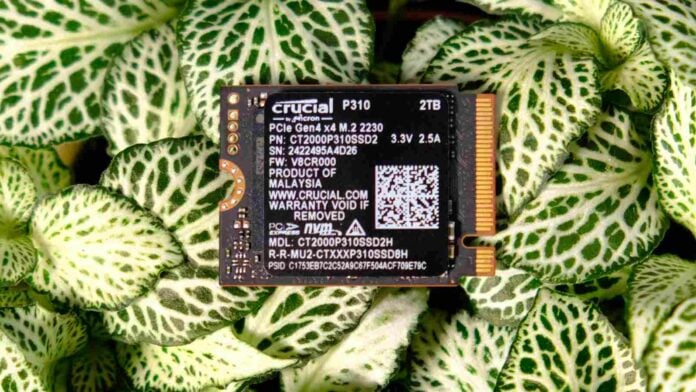Bigger isn’t always better. With the rise in gaming handhelds comes an increase in demand for small and efficient storage devices that can keep up. Rocking up fashionably late to the mini SSD party is Crucial P310, offering up to 2TB of space in a tiny 2230 format that’s closer to the size of an SD card than a full M.2 drive.
It’s not short of competition. Sabrent Rocket 2230, Corsair MP600 Mini, and even its own stepbrother, Micron 2400, have knocked around since the start of 2023. But you know the saying: good things come to those who wait.
Besides, one more on the market can only help to drive prices down. Starting at $114.99 for 1TB and $214.99 for 2TB, it’s admittedly on the higher end but touted performance is worth the premium as one of the faster drives around.
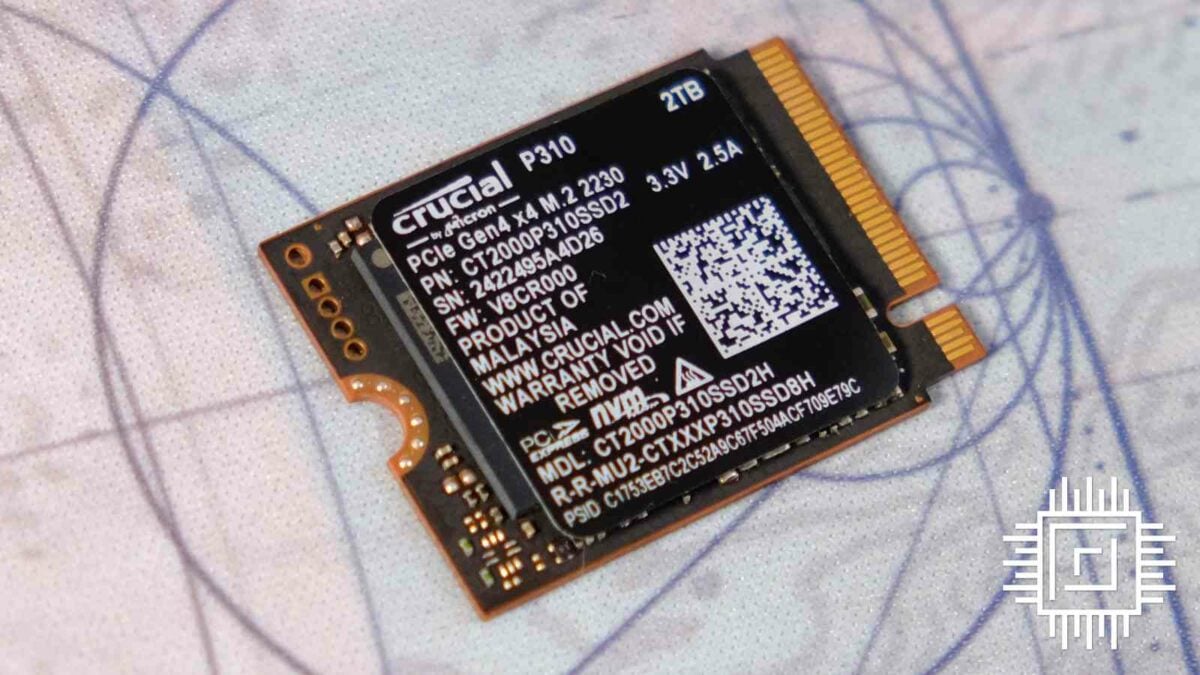
Specifications
| Crucial P310 | 1TB | 2TB |
|---|---|---|
| NAND | 232L Micron TLC | 232L Micron TLC |
| Interface | PCIe 4.0 x4 | PCIe 4.0 x4 |
| Sequential Read Speed (MBps) | 7,100 | 7,100 |
| Sequential Write Speed (MBps) | 6,000 | 6,000 |
| Random Read IOPS (K) | 1,000,000 | 1,000,000 |
| Random Write IOPS (K) | 1,200,000 | 1,200,000 |
| Form Factor | M.2 2230 | M.2 2230 |
| Endurance (TBW) | 220 | 440 |
| Heatsink version | No | No |
| Warranty | Five years | Five years |
| Current price (estimate) | $115 | $215 |
Being just 22mm wide and 30mm long, it doesn’t come with a heatsink. Fortunately, it doesn’t really need one being a dinky PCIe 4.0 x4 drive. After all, it benefits from the versatility of slotting seamlessly into portables like Steam Deck, and small form factor (SFF) builds with a compatible 2230 M.2 slot. Anything more and it runs the risk of being too tall for the ride.
One thing that stands out about P310 is its noticeably low endurance. Claiming just 440TBW, it slips behind Sabrent’s and Corsair’s 600TBW. The main reason for this is opting for Micron 232-layer 3D QLC NAND instead of TLC.
Diving into the technical, QLC packs more bits per channel and uses less silicon, making it cheaper, beefier, and proficiently efficient. This is the name of the game for devices with battery life. The inherent drawback is that it has a shorter lifespan.
Endurance tends to be an overbuilt metric that costs the consumer more.
James Van Patten, director of memory and storage product lines at Crucial
According to James Van Patten, Crucial’s director of memory and storage product lines, it’s not likely to matter anyway. He tells us that “endurance tends to be an overbuilt metric that costs the consumer more.” Research shows people rarely write even half as much as claimed yet still pay for the luxury of higher figures. P310 isn’t about playing the numbers game or pulling the wool over your eyes, but instead giving you exactly what you want.
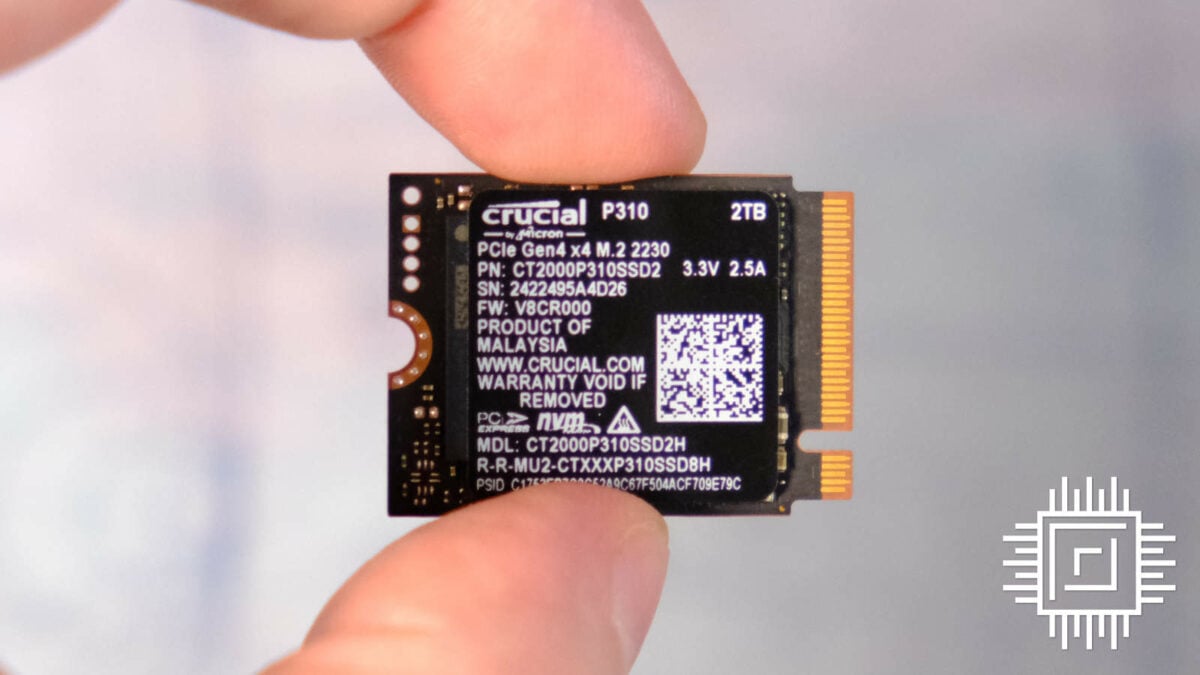
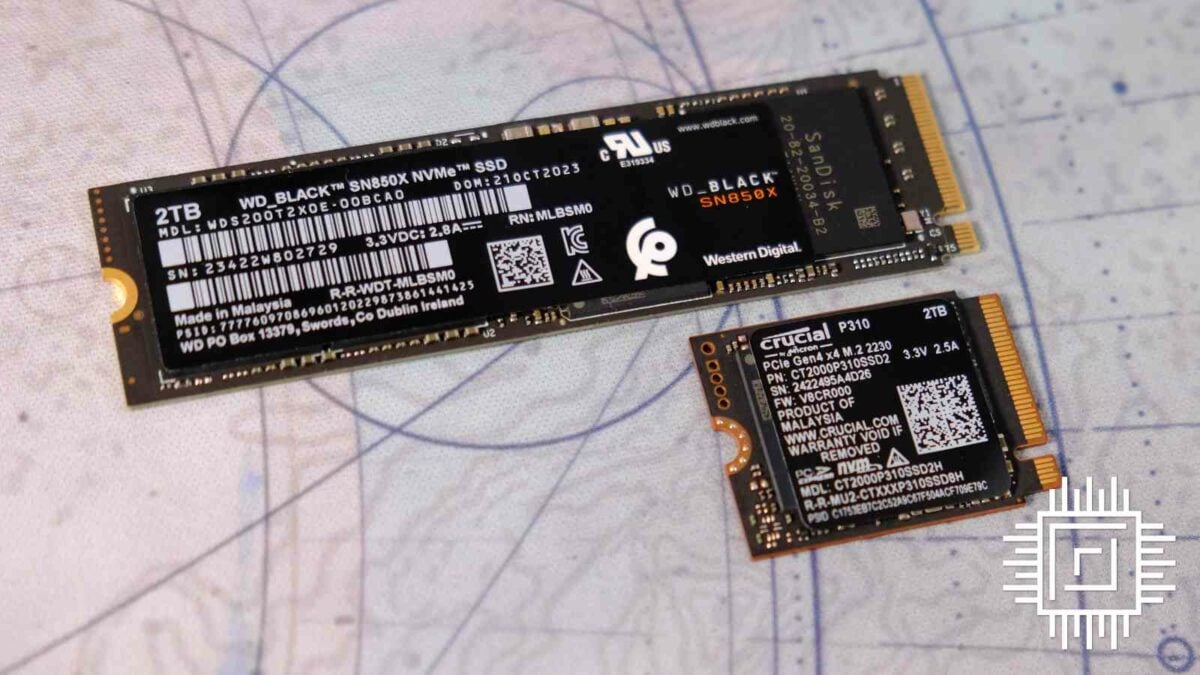
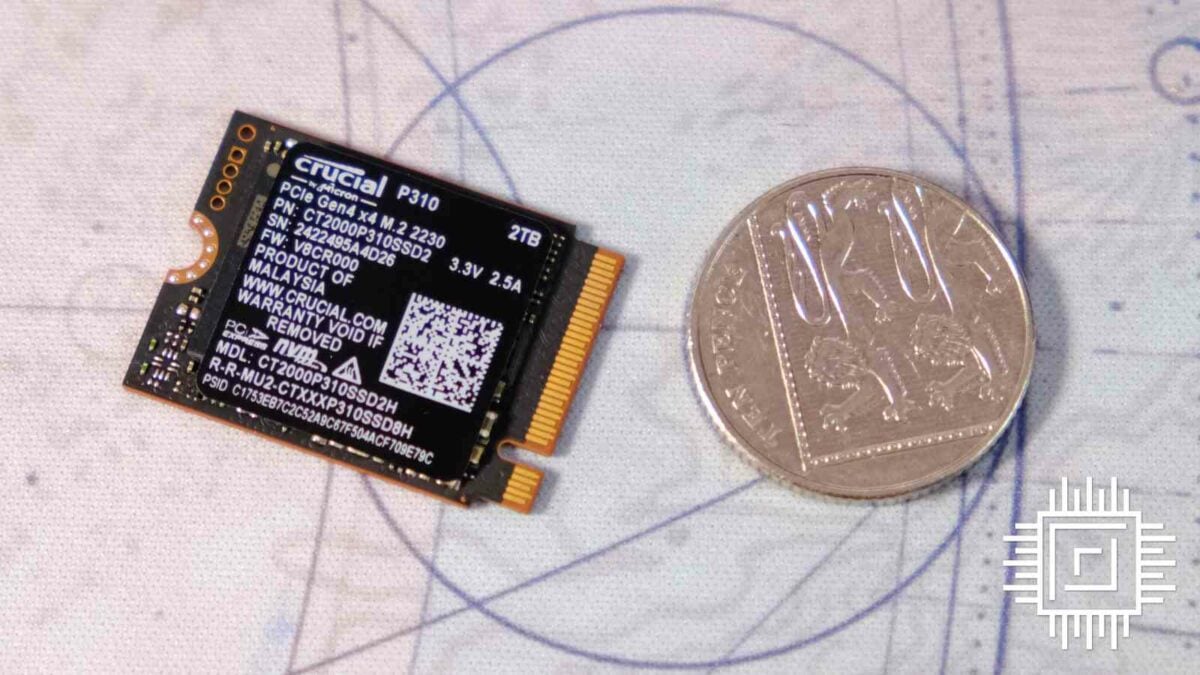
Usually, QLC NAND trips up with slower transfer speeds, but P310 is anything but middling. Claiming 7,100MB/s sequential read speeds and 6,000MB/s sequential write, it nearly saturates the bandwidth of its PCIe 4.0 interface. Random IOPS reach as high as 1M and 1.2M for read and write respectively, which is industry-leading for such a diminutive drive. It might even be a little overkill for handhelds, but it’s better to have it and not need it than the other way around.
Although QLC offers higher capacities without the added premium, P310 caps out at 2TB. There’s no sign of a 4TB model, but it’s not out of the question. Van Patten says it’s “something we’ve considered. I think, at this point, we’re still trying to gauge the demand. It’s certainly technically possible, but really more about whether enough people want it. We’ll be watching closely.”
It’s a similar reason P310 sticks with PCIe 4.0. Van Patten is open to the idea of PCIe 5.0 but highlights several hurdles in the way first. “There are different thermal challenges in Gen 5 storage today than we’ve seen in previous generational uplifts. It’s already difficult when you stack heat-generating components like a sandwich in a small space, but you still want to drive performance as high as you can reasonably make it. It’ll naturally throttle.” Instead, this model acts as the sweet spot designed to make everyone happy.
P310 is a little on the small side for my MSI MEG X670E Ace, held down by the motherboard’s heatsink rather than a tried-and-true clip. Still, with firmware updates in place, it’s time to test the mini SSD’s mettle.
Performance
Synthetic
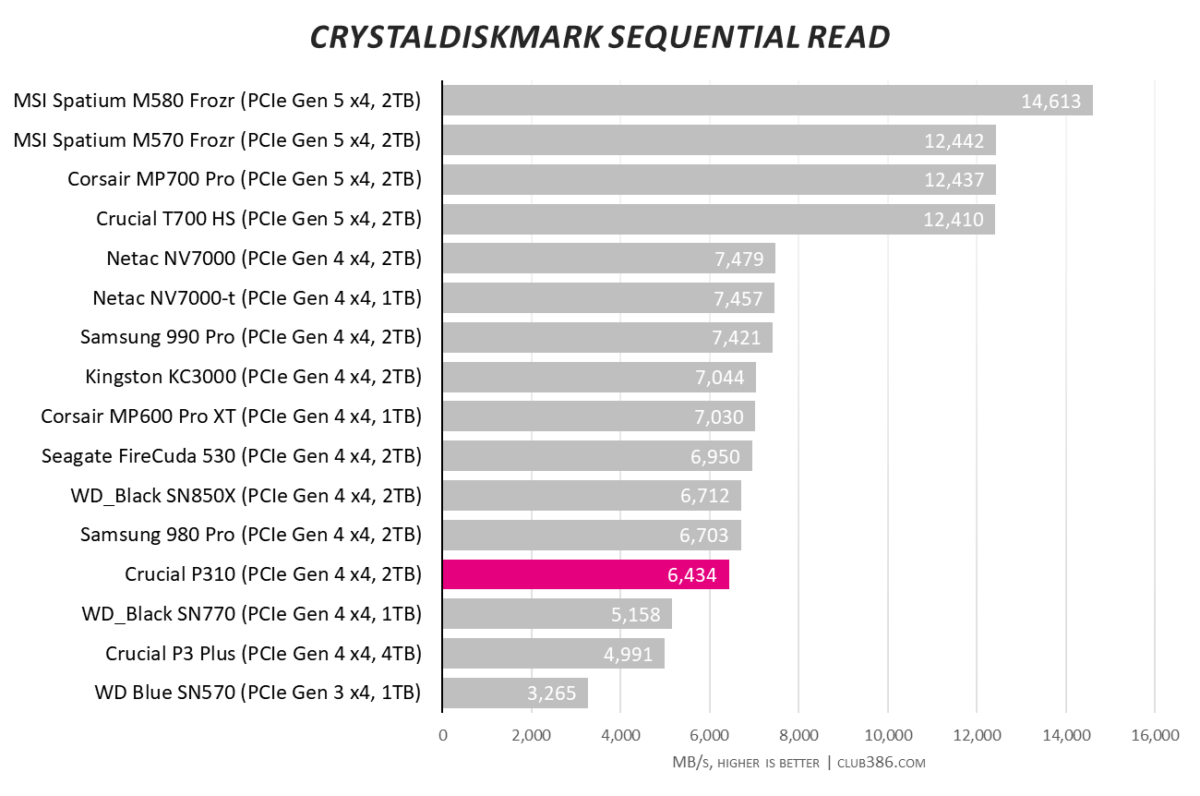
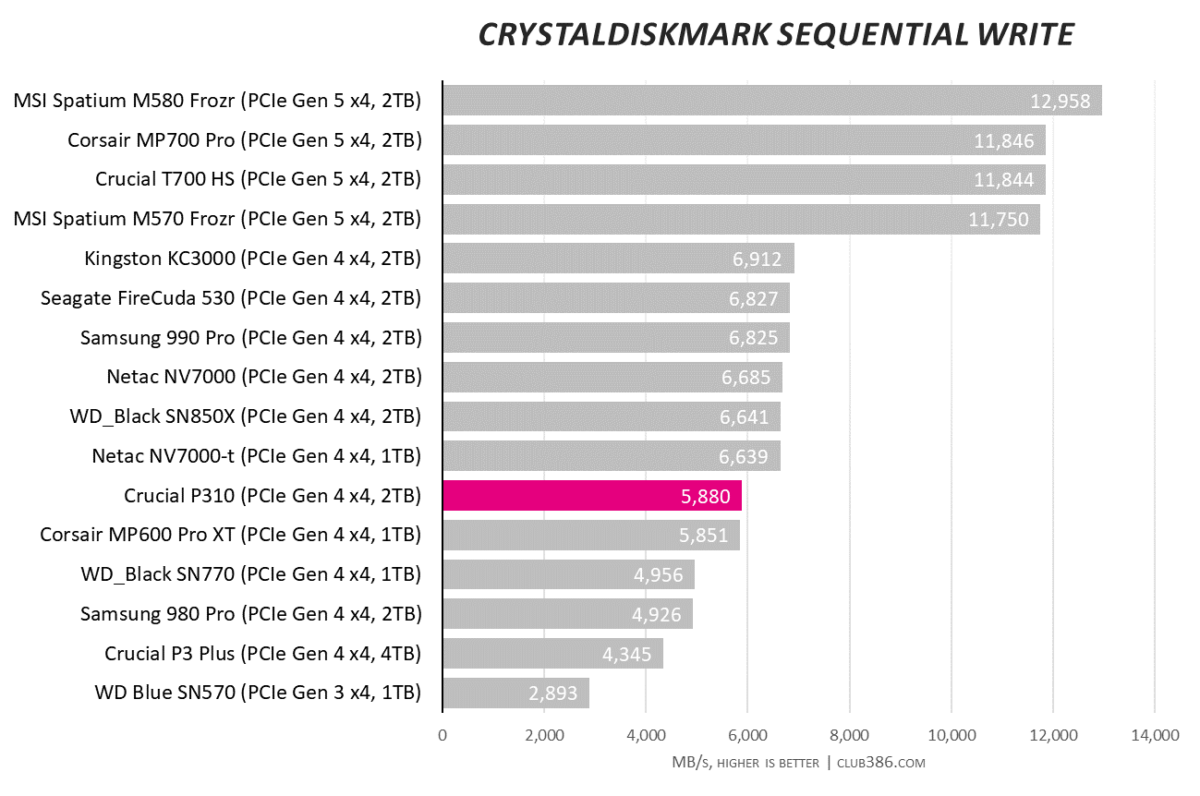
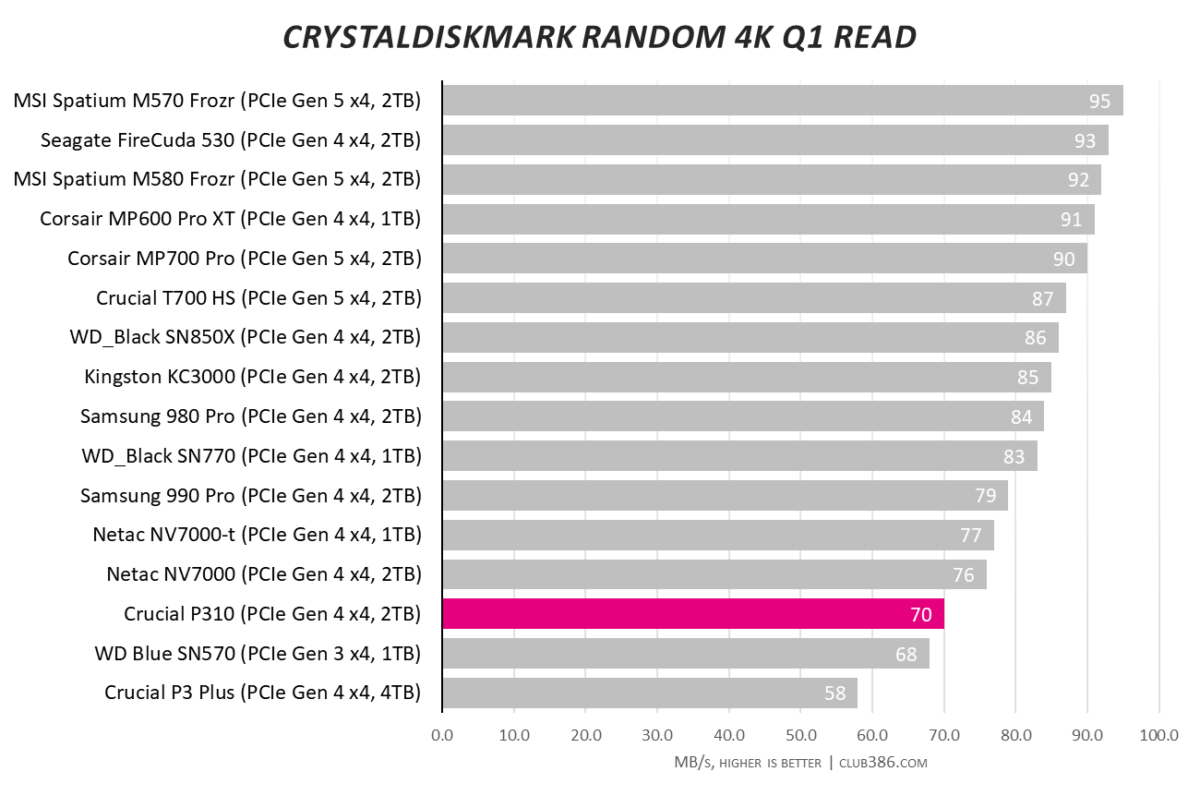
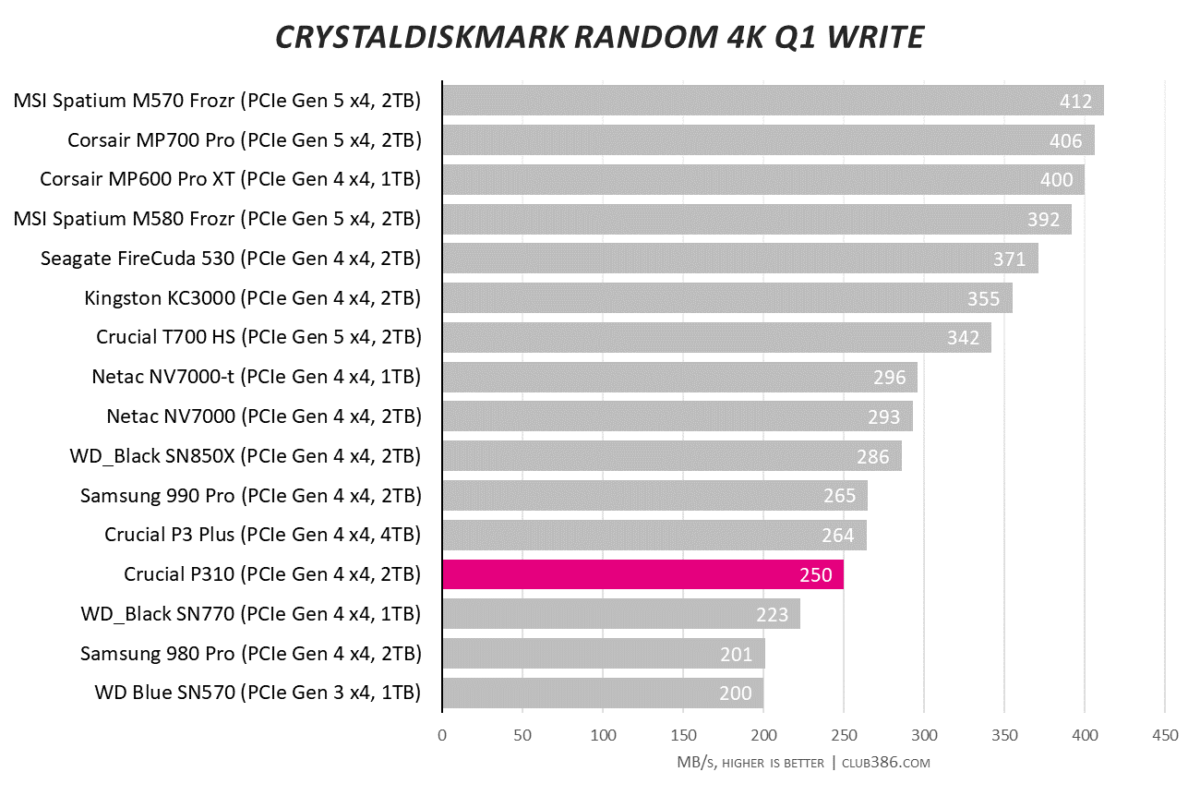
Sequential read speeds fall a bit short in my CrystalDiskMark tests, hitting 6,434MB/ rather than 7,100MB/s. Sequential write speeds close the gap with a much closer 5,880MB/s, which I’d say is within the 6,000MB/s margin. No matter how many times I ran these benchmarks, they remained remarkably consistent with single figure changes at most.
Being purely synthetical tests, they’re not the most representative of real-world performance. Regardless, these scores are more than enough to satisfy handheld users out there, eclipsing the competition by several thousand megabytes.
Gaming
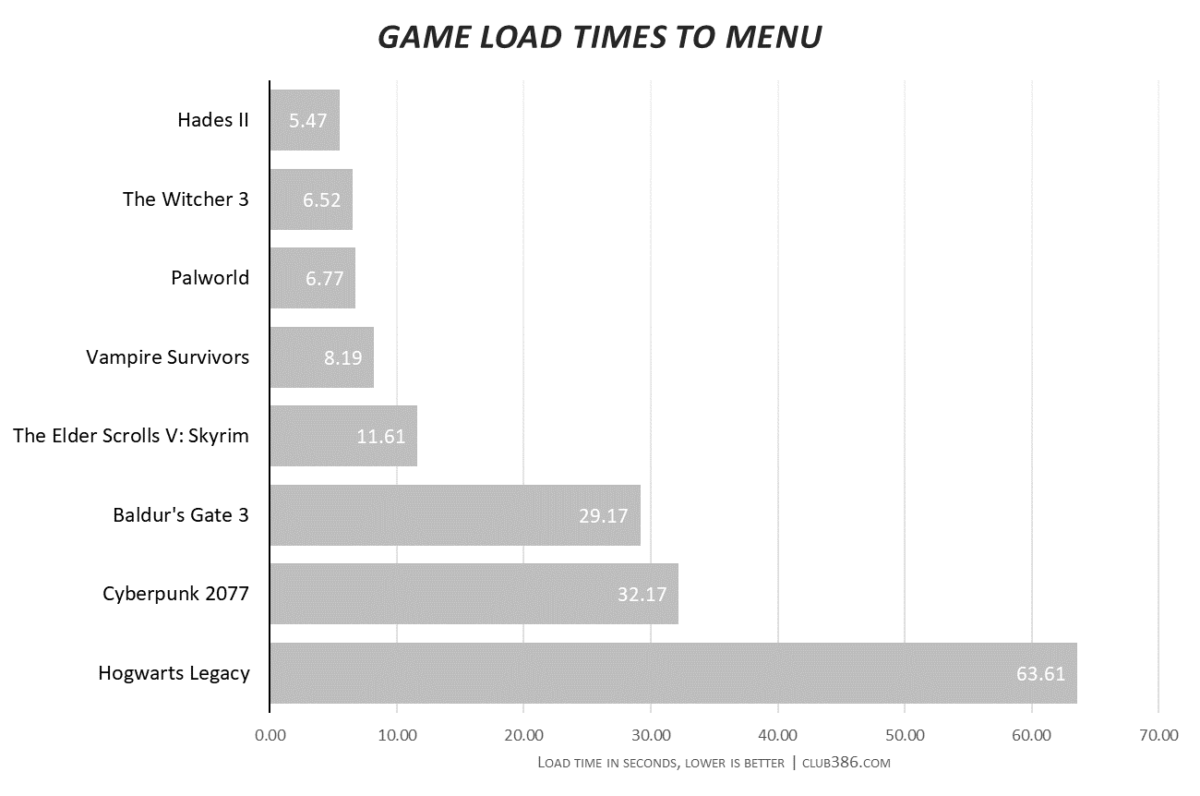
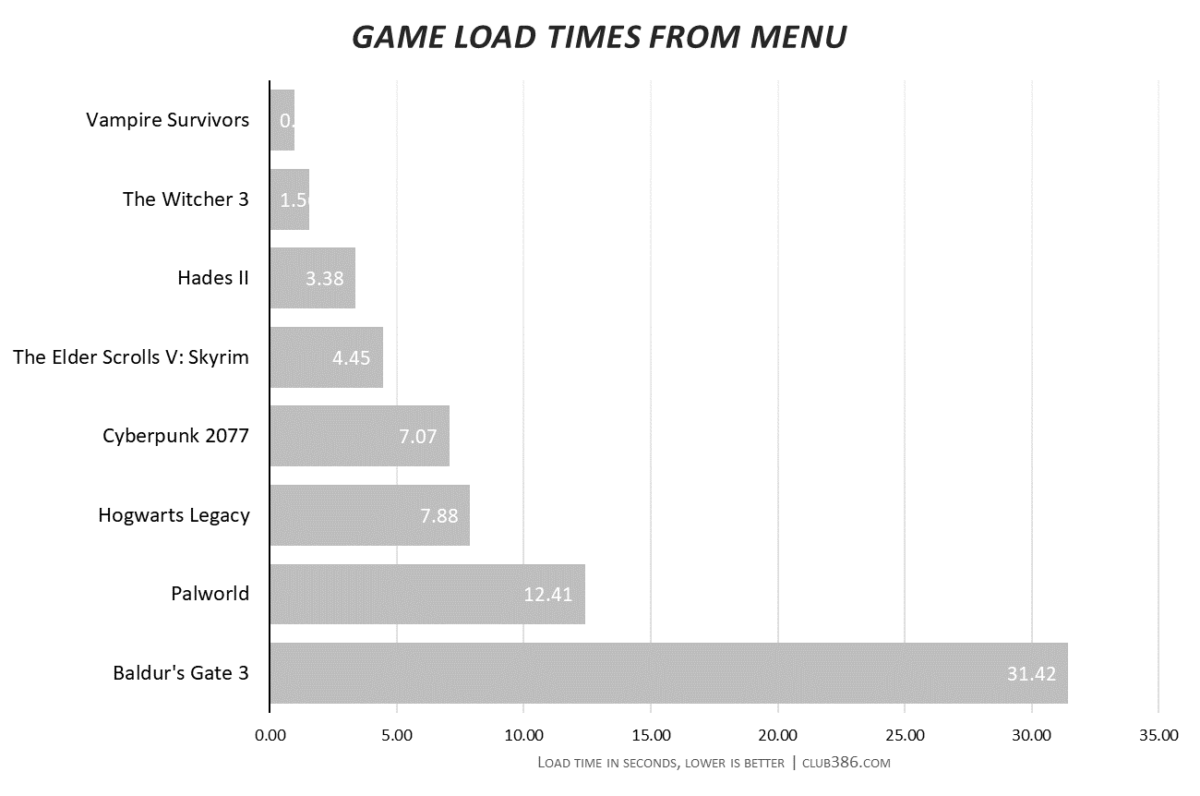
QLC NAND without onboard DRAM isn’t usually the best combination for gaming performance. Comparatively speaking, TLC options are sometimes a touch quicker but we’re talking no more than a couple of seconds apiece. Crucial bridges the gap nicely with brute-force transfer speeds and the return means much bigger drives that don’t cost an arm and a leg.
In my opinion, P310 puts up some respectable load times on some of the top Steam Deck games right now. If you venture into multiplayer, there’s no way you’ll be the one holding up the lobby. The cherry on top of an already lovely cake is that it edges out WD_Black SN770M in terms of performance all while sipping the same amount of battery life.
Conclusion
Like the Kool-Aid Man, Crucial has burst onto the mini SSD scene with an impressive showing. P310 isn’t just a suped-up Micron 2400 but a beast of its own that contends with the best SSDs, including full-sized alternatives. Featuring unrivalled speeds, you’d be hard-pressed to find a better device to stick in your Steam Deck, Asus ROG Ally, or SFF PC. That’s the power of making all your NAND in-house.
That said, there is the small matter of price. Our 2TB model more than justifies its $214.99 MSRP, but it’s hard to ignore that staple drives that have been around for the past year have already fallen a bit cheaper. P310 still has its place for those who feel every second counts when loading into a game, but you might feel your eyes wandering elsewhere if you’re more budget-conscious.
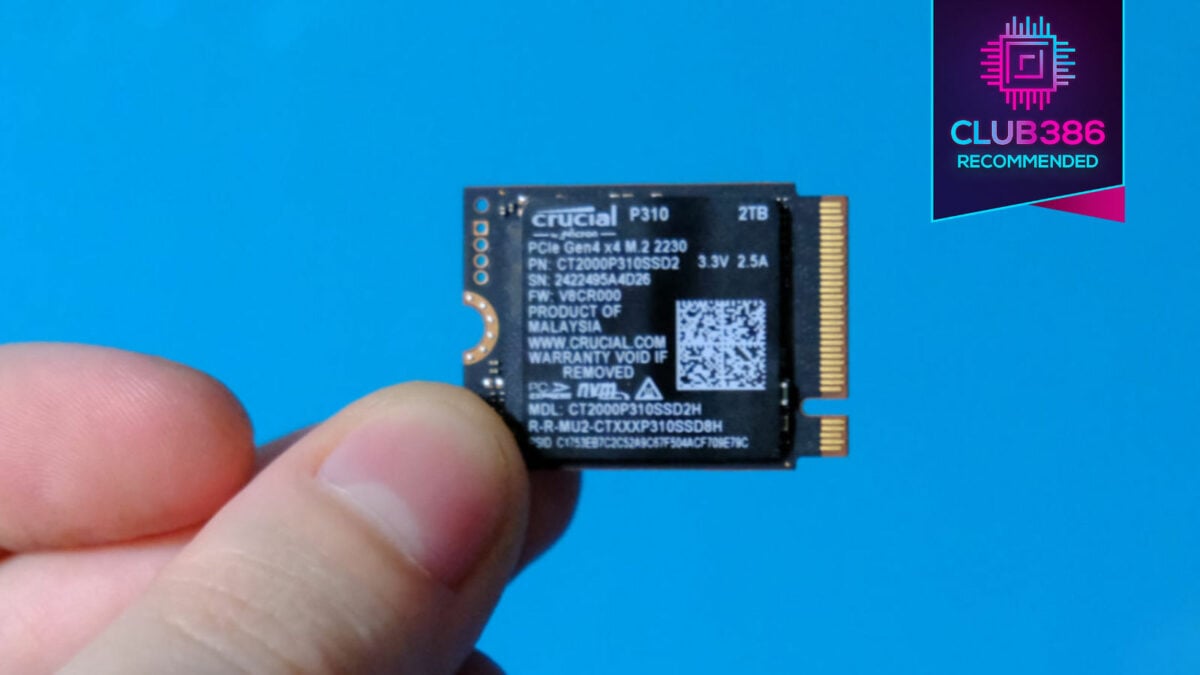
Crucial P310
Verdict: A miniature SSD that makes a huge impact, designed from the ground up for your Steam Deck.
Pros
Remarkably consistent speeds
Efficient
Fits in Steam Deck
Five-year warranty
Cons
Slightly higher price
Lower endurance
No 4TB option
Buy
